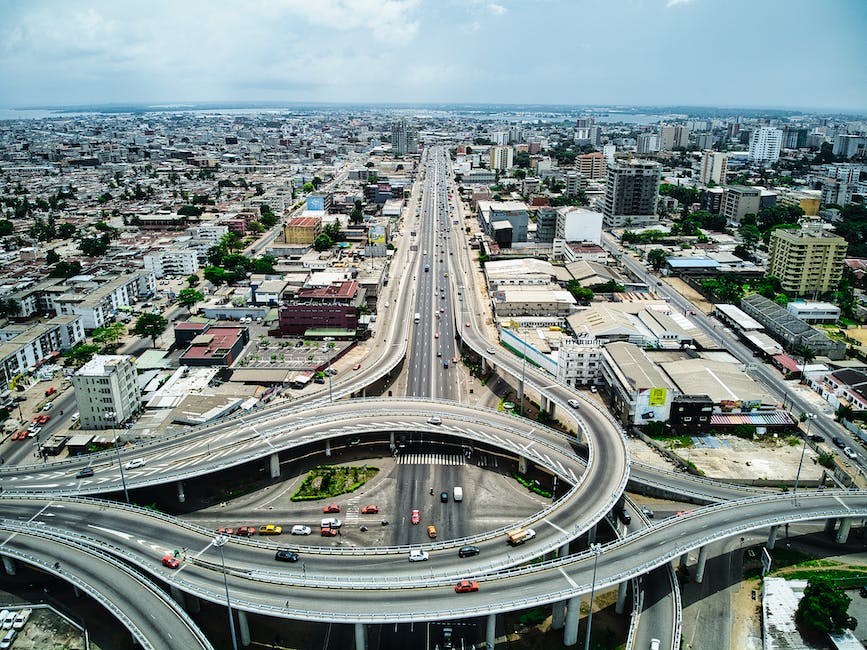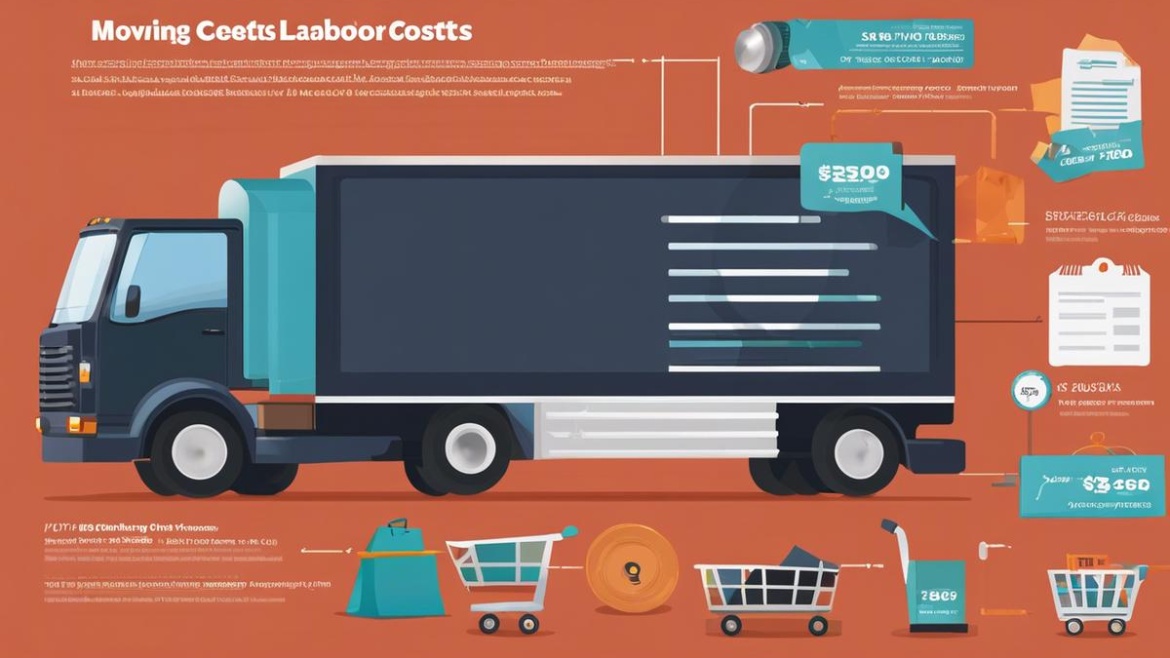Moving between states can bring immense joy and excitement, but it also involves a complex web of elements that contribute to the overall costs. As a client, understanding these elements can not only provide transparency in moving expenditures but also give you the ability to negotiate better and possibly lower the inevitable financial outlay. Our in-depth examination will travel through this maze, dissecting components like moving company charges, packaging, labor and insurance costs, and the nuances of non-binding to excess and binding not-to-exceed estimates. We will also shed light on the impact of routes, distance, timing, and seasonal factors on moving costs, arming you with knowledge to make the best choices possible.
Understanding the Components of Moving Costs
Navigating the myriad decisions involved in moving, particularly at an interstate level, can feel like taking on a daunting gauntlet. One of the key concepts to grasp is the unique motion of costs that sway through this process. Many variables play crucial roles in increasing or decreasing the final cost. Understanding these variables can help you manage your budget effectively, and shield you from unwelcome surprises.
Firstly, consider the distance of your move. The miles to be traversed directly impact the cost. A moving service must account for fuel, tolls, vehicle maintenance, and the time it takes to travel across states. As these costs are typically non-negotiable, target your efforts towards areas where potential savings could be reaped.
Ton in on your inventory – the weight and volume of your possessions dictate the size of the moving truck required, and potentially the number of movers needed – all significant cost factors. Streamlining your belongings prior to the move could create financial breathing room in your budget. Consider shedding items that no longer serve you – donate, sell, or recycle them. Embrace this chance for a thorough cleaning of your tangible life, to lighten not just your moving load, but also the associated expense.
Then, hang a lantern on the time of year. Rates fluctuate based on the demand, with peak moving periods during summer and holidays. A savvy mover could exploit off-peak times for a potentially cost-effective move. Remember: shifting your moving day by just a few weeks could mean significant savings.
Furthermore, ponder the additional services you may require. Packing materials, full-service packing, temporary storage, and insurance are not included in the basic moving services, and these add-ons inflate your final expense. For these services, you decide the extent of your involvement to balance your time, effort, and cost.
Finally, acknowledge that your location plays a role. Costs of labor and standard of living differences between states means that professional moving services charge differently based on your starting and ending points.
Clearly, interstate moving costs are a dance of multiple variables, each prancing to its unique rhythm. Business brains voice the reality of empowering yourself through knowledge, and parleying that knowledge into financial savings. By understanding these components of interstate moving costs, you’re equipping yourself to strike a harmonious balance between affordability and ease, and perform the financially savvy waltz of your interstate move with aplomb. Now that’s innovative living.

The Impact of Routes and Distance on Moving Costs
Demystifying Interstate Moving Costs: The Role of Distance and Routes
Embarking on an interstate move often means grappling with a multitude of decisions, mainly around the cost. While factors such as the volume of your belongings and the time of year influence moving expenses directly, one aspect that might not be immediately apparent is the impact of chosen routes and distances. Understanding how these aspects determine the overall cost can be the key to strategic and economical moving decisions.
Imagine moving as an elaborate commercial logistic operation. Companies form pricing strategies based not only on the mileage but also the routes taken, often mirroring the approach of global shipping and haulage industries, albeit on a smaller scale. Here’s a closer look at these key determinants.
Firstly, the route between the starting point and the destination plays a pivotal role in calculation of moving costs. Less straightforward journeys, involving a high number of turns, city driving, or mountainous terrains, can escalate prices due to increased fuel consumption and slower delivery times. Often, moving companies prefer highways due to their direct paths and higher speed limits, thus reducing the time and fuel required to deliver your belongings.
However, these routes may expose your goods to risks such as chances of delays due to traffic congestion or highway construction. For instance, taking the highway could mean encountering bottlenecks around major cities. Such disruptions could inadvertently lead to an increase in delivery times and potentially a ripple effect of cost hikes.
Just like the dynamics of supply and demand dictate pricing in various industries, similar principles apply to moving companies. If a certain route is popular among home movers, the competition for resources in those common corridors could drive up the price. Hence, unconventional routes might be worth considering for potential cost savings despite possibly longer transit times.
Secondly, the straight-line or ‘as-the-crow-flies’ distance is less relevant than the actual driving distance. Moving companies typically charge per unit of distance traveled rather than straight-line distance. Thus, a longer route, likely due to geographic constraints or efforts to avoid traffic congestion zones, ultimately results in a higher quotation.
To wrap up, while distance and routes might not be the first factors that come to mind when considering the cost of an interstate move, they do have a significant influence. By gaining a comprehensive understanding of how these variables shape your moving expenses, you can make well-informed decisions, minimizing costs and ensuring a seamless transition to your new home. In the entrepreneurial spirit of innovating solutions, you might even consider utilizing route optimization technologies to determine the most cost-effective pathway for your move.
With this in-depth understanding of the elements shaping moving costs, navigating the complexities of an interstate move becomes less daunting. After all, properly planning a move is just like managing an efficient business – it requires a strategic mind, savvy budgeting and a strong sense of innovation.

Time and Seasonality Factors in Moving Costs
Optimizing Your Moving Route: The Game-Changer in Interstate Moving Costs
Unquestionably, when tackling an interstate move, there are myriad variables that come into play, impacting not just the complexity, but also the cost of the endeavor. Having acknowledged the implications of distance, the value in paring down your possessions, considering seasonal fluctuations, including additional services, and understanding the cost based on locations, it’s time to dig deeper and discern the important role routing plays in your moving costs.
In assessing the overall moving costs, we draw parallels with commercial logistics operations, which face similar variables. The chosen route for your move can indeed create ripples in the final moving expense. Highways and direct paths offer an allure of less time spent and, consequently, reduced fuel consumption, which propels these cost-effective benefits to your bottom line. These are the trusted routes, but they do harbor potential disruptions – traffic jams, road work, and higher tolls, which directly influence time, costs, and stress levels.
An appraisal of unconventional routes can present an intriguing possibility. While the straight-line distance from point A to point B may indeed be the shortest, the actual driving distance might differ. Though these paths might not be the most popular or the quickest, they can often lead to substantial cost savings by evading some of the common roadblocks.
With innovation abounding in numerous industries, why should moving be an exception? Today, the market offers sophisticated route optimization technologies that have made their mark in the delivery world and can indeed be a game-changer for your interstate move. With these technologies, one has the capability to strike a balance between minimizing driving distances, travel times, and fuel consumption – culminating into significant cost savings. Yet, it’s not solely about cost, it’s also about predictability and the overall moving experience.
Certainly, route optimization does underscore the importance of comprehensive understanding and proactive decision-making in the whole moving process. Equipped with such knowledge, one can strategically plan their route, accurately budget for their move, and leverage the available innovative tools, thereby encapsulating efficiency into their interstate moving endeavor. At its foundation, this approach is all about capitalizing on strategy, budgeting savvy, and innovative thinking, not just to manage, but master your move.
In the final analysis, does the timing or season affect your interstate moving cost? Absolutely. And you can measure its significance by the degree of control you exercise, be it by reducing the volume of your belongings, selecting a favorable time of the year, wisely choosing additional services, estimating the costs based on locations, or optimizing your route. Be rest assured, every bit of innovation, strategic planning, and savvy budgeting will steer you towards a successful and cost-effective move. The more control you exercise, the less you leave to chance, thus, the lower your interstate moving costs.

Ways to Minimize Interstate Moving Costs
Shifting our focus, let’s examine the role of moving insurance in controlling costs. Insurance may seem like an added expense, but in reality, it can save you from unforeseen and potentially enormous expenses. Think broken antique vases or damaged electronics — the potential cost savings in having adequate moving insurance are vast. The decision to spend a reasonable amount on insurance can offer peace of mind against loss or damage of irreplaceable or high-value items.
Next, consider the moving company. While those with a little elbow grease and a penchant for adventure might be tempted to tackle it alone, hiring professionals can actually provide significant cost savings. Moving companies have the expertise, resources, and economies of scale that a solo mover simply doesn’t possess. They know the best and quickest routes to take across state lines, how to pack and transport items to minimize damage, and many offer bundled services that can be cheaper than the DIY approach.
Furthermore, remember to evaluate the company’s reputation. A professional and reliable company will not only ensure the safe transportation of your belongings, but also save you from potential nightmare scenarios such as late delivery or hidden fees. The process of vetting moving companies can be time-consuming, but it’s a worthy investment to avoid unanticipated costs.
Another underappreciated strategy is to negotiate the moving cost. Unlike many other services, moving costs are not always set in stone. Try haggling to get a better rate or requesting an off-peak time discount. Some companies even offer price matching, so comparison shopping and open communication can lead to significant cost savings.
Don’t overlook tax deductions either. Recent tax law changes have altered who can claim moving expenses, but some jobs and situations still allow for cost deductions. Ensure to keep all moving receipts and consult a tax professional to understand your eligibility, the deduction could put extra cash back into your pocket.
Lastly, efficient utilities setup and cancellations can be a powerhouse of unrecognized savings. Timely disconnection from utilities at your old home and reconnection at the new one can prevent bills for services you’re not using. Simultaneously, changing your address promptly with service and subscription providers can help avoid extra transportation fees or late penalties.
In conclusion, cost savings in interstate moves go far beyond reducing physical load or choosing the less popular moving season. Smart decisions about insurance, professional movers, negotiation, tax deductions, and timely management of utilities can carve out substantial savings in the moving budget. The power to minimize moving costs lies in proactive planning, mindful decision-making, and astute execution.

As the final piece of the interstate moving puzzle, we share essential cost-saving tips that can dramatically reduce your moving expenditures. Understanding how to leverage multiple quotes, the use of portable containers, and the strategy of moving during off-peak seasons is invaluable. More innovative tactics, such as utilizing federal subsidies or partnering with firms offering relocation subsidies for employee retention, can potentially turn a financial burden into a manageable expense. At the end of the day, a well-informed client can harness these insights to facilitate a significantly smoother and cost-effective moving experience.

